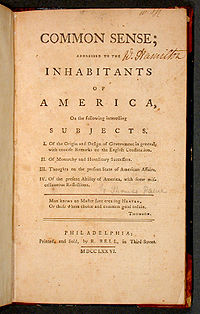Flyer (pamphlet)




A flyer is a form of paper advertisement intended for wide distribution and typically posted or distributed in a public place, handed out to individuals or sent through the mail. In the 2010s, flyers range from inexpensively photocopied leaflets to expensive, glossy, full-colour circulars. In the 2010s, electronic flyers are sent via e-mail.
Terminology
A flyer is also called a "flier", "circular", "handbill", "pamphlet", "poster" or "leaflet".
Usage
Flyers may be used by individuals, businesses, not-for-profit organizations or governments to:
- Advertise an event such as a music concert, nightclub appearance, festival, or political rally
- Promote a goods-selling businesses such as a used car lot discount store or a service business such as a restaurant or massage parlour.
- Persuade people about a social, religious, or political message, as in evangelism or political campaign activities on behalf of a political party or candidate during an election. Flyers have been used in armed conflict: for example, airborne leaflet propaganda has been a tactic of psychological warfare.
- Recruit members for organizations or companies.
Like postcards, pamphlets and small posters, flyers are a low-cost form of mass marketing or communication. There are many different flyer formats. Some examples are:
- A4 (roughly letterhead size)
- A5 (roughly half letterhead size)
- DL (compliments slip size)
- A6 (postcard size)

Flyers are inexpensive to produce and they required only a basic printing press from the 18th century to the 20th century. Their widespread use intensified in the 1990s with the spread of less expensive desktop publishing systems. In the 2010s, inexpensive black and white flyers can be produced with just a personal computer, computer printer and photocopier. In the 2010s, the ordering of flyers through traditional printing services has been supplanted by Internet services. Customers send designs, review proofs online or via e-mail and receive the final products by mail.
Flyers are not a new medium: prior to the War of American Independence some colonists were outraged with the Stamp Act (1765) and gathered together in anti-stamp act congresses and meetings. In these congresses they had to win support, and issued handbills and leaflets, pamphlets, along with other written paraphernalia, to do so.
In the 2000s, some jurisdictions have laws or ordinances banning or restricting leafleting or flyering in certain locations. Owners of private property may put up signs saying "Post No Bills"; this occurs particularly on wooden fences surrounding building sites or vacant lots.
Distribution and use
Flyers are handed out on the street (a practice known as "flyering" or "leafleting"), posted on bulletin boards, put under windshield wipers of cars, given away at events or on the street, or affixed to telephone poles, walls, or other surfaces. Bulletin boards are found on college campuses, in cafés, community meeting houses, laundromats and small markets. Cheap to produce, contemporary flyers are frequently produced in 300 g/m2 glossy card, whereas a leaflet might be produced on a 130 g/m2–170 g/m2 weight paper and can be a very effective form of direct marketing.
San Francisco has a long history of flyering. The first flyer company was The Thumbtack Bugle, which has been around for over twenty-five years.[citation needed] Haight Street is very popular for posting on telephone poles.[citation needed] Flyers have become an integral aspect to the Edinburgh Fringe, where flyers are handed to people on the Royal Mile.[citation needed]
In the 2010s, some individuals and organizations send flyers through e-mail, a tactic that avoids spending money on paper, printing and mailing or hiring people to post the flyers on telephone poles or hand them out. The electronic flyer may be embedded into the body of the e-mail or added as an attachment to be opened.
See also
References
Notes
This article includes a list of references, related reading, or external links, but its sources remain unclear because it lacks inline citations. (August 2011) |
Bibliography
- Fly: The Art of the Club Flyer (Watson-Guptill Publications, 1997), by Nicola Ackland-Snow (Author), Nathan Brett (Author), Steven Williams (Author), ISBN 0-8230-1854-7, ISBN 978-0-8230-1854-3
- Searching for the Perfect Beat: Flyer Designs of the American Rave Scene (Watson-Guptill, 2000), by The Earth Program (Author), Neil Strauss (Introduction), ISBN 0-8230-4751-2, ISBN 978-0-8230-4751-2
- Barcelona Club Flyers (Actar Publishing, 1999), by Tite Barbuzza (Contributor), Joan Manel Jubany (Contributor), Albert Masferrer (Contributor), Yolanda Muelas (Contributor), ISBN 84-89698-25-2, ISBN 978-84-89698-25-3
- Büru Destruct (Consortium Book Sales & Dist, 1999), By Büru Destruct, ISBN 3-931126-24-2
- Clubspotting (Happy Books, 2000), by Paolo Davoli & Gabriele Fantuzzi, ISBN 88-86416-24-5
- Design After Dark: The Story of Dancefloor Style (Thames and Hudson, London, 1991), by Cynthia Rose, ISBN 0-500-27648-X
- Design Agent 007: License to Design DGV, (Die gestaften verlag, Berlin 2002), ISBN 3-931126-14-5
- Event Flyer Graphics (Förlag: Nippan/Biblios, 2001), ISBN 3-910052-75-4
- Flyer Soziotope: Topography of a Media Phenomenon (Archiv der Jugendkulturen (G)/Actar (ES), 2005), German-English and English-German, ISBN 3-86546-032-1, ISBN 84-96540-03-0
- Flyermania: European Flyers (Art Books Intl Ltd, August 1998), by Robert Klanten (Author), Andreas Peyerl (Author), Markus Hollmann-Loges (Author), ISBN 3-931126-15-3
- Highflyers: clubravepartyart (Booth Clibborn Editions, London, UK, 1995), by 3 Beat Music, ISBN 1-873968-78-7
- Nocturnal : Global Highflyers (Booth-Clibborn, hardcover/paperback, 2000), by Phil Beddard, ISBN 1-86154-169-4
- Searching for the Perfect Beat: Flyer Designs of the American Rave Scene (Watson-Guptill Pubns, US, 2000), by Joel T. Jordan (Author), Summer Forest Hoeckel (Author), Jason A.Forest Jordan (Author) & Neil Strauss (Intro), ISBN 0-8230-4751-2
External links
 Media related to Hand bills at Wikimedia Commons
Media related to Hand bills at Wikimedia Commons
